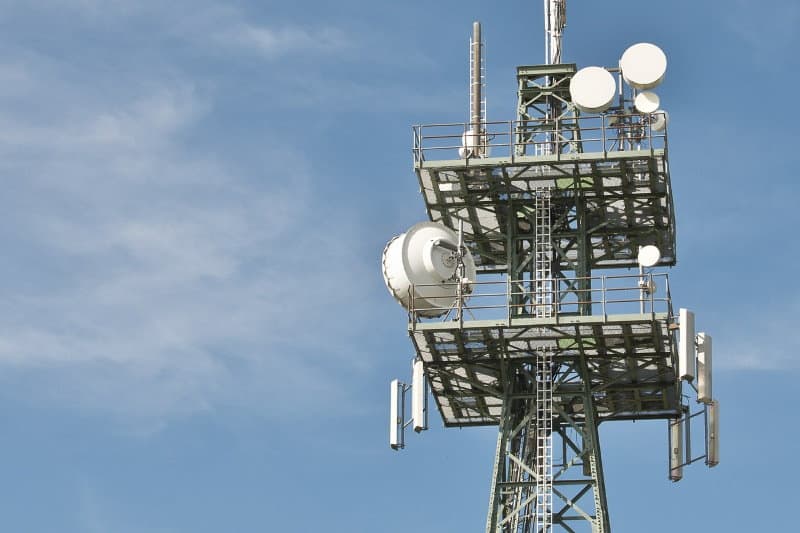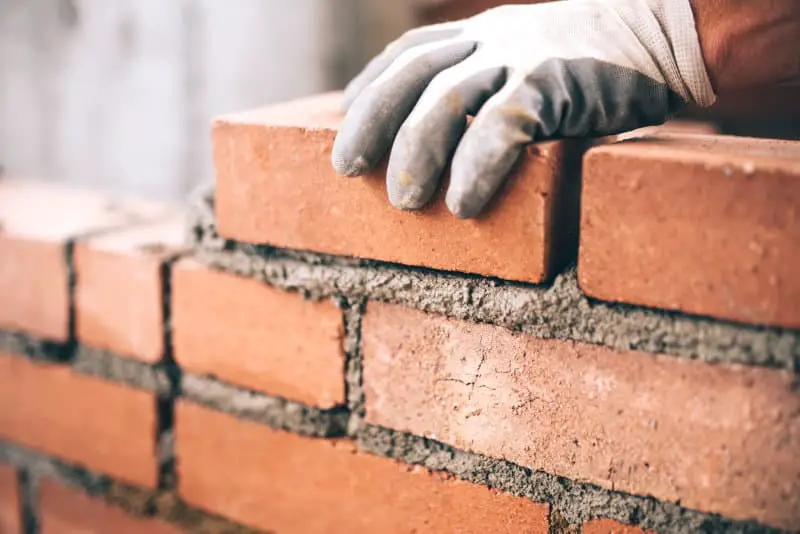Most EMF emissions can be blocked by several materials such as glass, tin, etc. If you’ve wondered if bricks can also block EMF, you need to read on to confirm the answer.
Brick is not a very effective medium for blocking EMF radiation. Brick is a building material that is made primarily from stones and clay. It is also comprised of sand, quartz, flint, etc. Although brick won’t block the radiation, it will attenuate its strength by more than 50%.
This article focuses on bricks and other building materials that can either block or attenuate EMF radiations. You will also learn specific steps you can take to block EMF radiation.
EMF Radiation Shielding Building Materials
People are constantly waking up to radiation, despite the dangers it poses. Several people want to protect themselves; however, there’s only so much one can do in the outside environment. Fortunately, we have control over what goes on in our homes, and we can take action to reduce our exposure to radiation by shielding our homes against it.
It is worthy of note that it is impossible to shield your home completely from EMF radiation. Fortunately, there are specific steps you can take to reduce the amount of radiation in your home significantly. One such step is the use of building materials that offer protection from EMF radiation. The following are some of these materials:
-
Brick
Brick is not a very effective material for reducing EMF radiation. A brick wall will not completely block the radiation; however, it will weaken its strength. For instance, the strength of a Wi-Fi signal will reduce with the number of brick walls it has to pass through to get to its destination. Therefore, the strength of the signal in one room will be different from another room.
In short, a single-layer brick wall will attenuate the EMF radiation of 1GHz by about 50%. If you add more layers of brick to the wall, the radiation will be further reduced. For instance, a three-layer brick wall can reduce EMF radiation of 1GHz by 80%.
-
Drywall
Drywall is not an effective material for blocking EMF radiation. The material, which is made from paper and gypsum, is employed as a wall covering in homes, and it is usually attached to the framing on the inside of the house. Drywall is commonly used in the United States for construction because of its fire-resistant nature. It is also relatively lightweight and cheap to manufacture.
Drywall had the worst performance in the research conducted by the NIST. A quarter-inch of drywall was only able to block 2% of 500MHz of EMF radiation and 8% of 8GHz.A half-inch-thick drywall blocked the same amount of EMF radiation.
-
Glass

Glass is not effective in reducing EMF radiation. Glass panels are commonly used in constructing windows, hotels, restaurants, and skyscrapers. The majority of the glass used in modern windows is the Low-E type.
Low-E glass has a metal film that enables it to reflect UV. NIST used plain glass in their study, and they found that glass does not block EMF radiation. While they can block a small amount of high-frequency radiation, glass has a minimal effect on shielding EMF radiations at lower frequencies.
For instance, a quarter-inch thick glass would block about 29% of EMF radiation at 8GHz; however, it would not block anything of a 500MHz. On the other hand, a half-inch thick glass would block about 24% EMF radiation of 500MHz.
-
Lumber
Lumber is not a very effective material for shielding EMF radiation. Lumber is a general term used to describe any wood used in constructing houses. It is used in framing, siding, and adding structural integrity to a building.
For instance, a 3-inch thick piece of lumber could block about 50% of 1GHz radiation. An increase in thickness resulted in an increase in shielding capacity as a 6-inch thick piece of lumber was able to block 75% of sane 1GHz radiation.
-
Solid Concrete
Solid concrete is an effective material for attenuating EMF radiation. Concrete is a highly common building material used in constructing both the foundation and the walls of a building. In 1997, the National Institute of Science and Technology conducted research on specific building materials to reduce EMF.
They used several building materials, including non-reinforced concrete, which is concrete without rebar or metals.
In the research, they found that the concrete’s effectiveness is highly dependent on how thick it is. For instance, a 4-inch thick slab could shield EMF radiation and block about 90% of radiation between 500MHz and 8GHz. When the slab was 12-inch thick, it was more effective as it blocked over 99% of the radiation.
-
Reinforced Concrete
Reinforced concrete is also a highly effective EMF-shielding material. However, it is not more effective than solid concrete. This material is the most common type of concrete used in building homes in the US.
It contains a mesh of metal rebar which functions by strengthening the concrete and provides better structure.
Reinforced concrete is only slightly better at shielding EMF radiation than solid, non-HF reinforced concrete. In the study mentioned above, an 8-inch thick slab of reinforced concrete was used, and it was able to block over 99% of EMF radiation.
Building Materials for Shielding EMF Radiation

You can use several building materials to shield your home from EMF radiation, and they include:
1. EMF-Shielding Window Film
If you want to prevent EMF radiation from coming through your windows, you need to install an EMF-shielding window film. However, you have to determine the type of glass on your windows before installing the film. Several windows used today are constructed using heat-absorbing glass, which is coated with a thin layer of precious metal that keeps your home from heating up and also reflects UV radiation.
If you use this type of glass in your window, then you can’t install this window film because combining an EMF-shielding window film and a heat-absorbing glass will render the film ineffective. If your home’s window is not made from the heat-absorbing glass, you can apply the EMF-shielding window film.
These window films can block up to 99% of EMF radiation at 1GHz from passing into your home. However, you need to ensure they are of high-quality.
A quality EMF-shielding window film you can use is the Block Film EMF Protection Window Films. It is able to provide protection against EMF between 30KHz and 10GHz, among others.
2. EMF-Shielding Paint
You can also shield your home from EMF radiations by applying EMF-shielding paint on your walls. EMF-shielding paint is easy to apply to your home, and they are usually used as a primer, i.e., you can paint over it using standard latex paint once it is dried. For effective coverage, you should use two layers of EMF-shielding paint on your walls.
Ensure you use high-quality EMF-shielding paints as they are made to attenuate up to 99% of EMF radiation when applied. An example of durable and highly efficient EMF-shielding paint is the ShieldON EMF Protective Paint. This paint is able to provide up to 99.9% protection from EMF radiation.
Note that EMF-shielding paints are expensive; hence, if you are unable to afford enough paint to cover your entire house, you should consider painting the vital areas such as the wall behind your smart meter.
3. EMF-Shielding Fabric
Apart from EMF-shielding paint and window films, you can further attenuate your exposure to EMF radiation by installing EMF-shielding fabrics in specific areas of your home. These fabrics are made from copper mesh or silver, reducing the EMF radiation passing through them. You can make drapes and curtains from high-quality EMF-shielding fabric.
You can also craft EMF-shielding bed canopies, mattress pads, crib canopies, etc.
The TitanRF Faraday Fabric is an example of high-quality EMF-shielding fabric. It has high signal blocking capacities and can function as a Faraday cage.
Other Ways You Can Shield Your Home
Although using EMF-shielding materials is an effective way of attenuating external radiation, they cannot influence the radiation within your home. Some EMF-shielding materials will amplify the EMF radiation that is coming from within your home.
Some sources of EMF radiation within your home are laptops, cell phones, television sets, wireless thermostats, smart meters, wireless routers, Bluetooth devices, etc.
To reduce your exposure to radiation from these devices, you have to:
Stop using Wi-Fi
Although wireless routers help us connect our devices to the Internet, they constantly emit a powerful EMF. To attenuate your exposure to the EMF generated by wireless routers, you need to stop using your Wi-Fi. Although this may seem extreme, the Wi-Fi is a constant source of radiation in our homes, and it emits a high-level of EMF, which is damaging to our bodies.
If you can switch from wireless Internet connection to a strictly wired one, you’ll eliminate the ambient radiation that is constantly emitted by your wireless router.
Set a timer
If you cannot eliminate your wireless router, you need to set a timer for it. If you can, set a schedule that automatically turns your Wi-Fi off at night or while you are away at work. This will help you to reduce the EMF radiation in your home by a significant amount.
Reconfigure your space
You can also reduce your exposure to EMF radiation by maintaining a distance between yourself and its source. This is premised on the fact that the farther you are from the source of radiation, the weaker its strength. If you can, arrange your house properly; keep EMF-emitting devices like laptops, smartphones, Wi-Fi, etc. away from your bedroom or areas where you spend a lot of time.
Conclusion
In conclusion, some building materials are more highly effective in reducing EMF radiation than others. If you can choose your building materials carefully, you’ll be able to attenuate your exposure to the EMF radiation that originates outside your home. You also need to ensure that you find ways to reduce the EMF radiation sources within your home.


